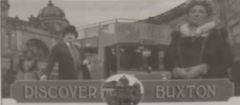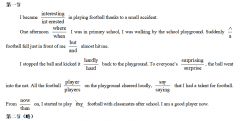安徽江南十校2016届3月联考英语试题及答案(3)
Donald W. Rethke, an engineer for Hamilton Standard Space Systems, developed a more private way to answer nature’s call: the space toilet. It is somewhat like the kind of toilet one would find on commercial airplanes --- with unique adaptations for zero gravity, of course. For instance, it has thigh bars that keep the astronaut from floating off the seat.
The astronaut (male or female) defecates (排便) in a bag and urinates (排尿) in a hose. Solid and liquid wastes are kept separated because at least 85% of the urine is recycled and, yes, after careful filtration, used for drinking and other purposes. (Water is always in demand in space.) A vacuum sucks the waste materials into the toilet, where the waste is compacted into hamburger-like patties for easy storage. Although not exactly like an earthbound visit to the toilet, it is at the very least much more private than in the early days of space travel.
28. According to the first paragraph, the lack of the gravity can turn something as simple as _______ into a major challenge.
A. eating B. taking baths C. sleeping D. answering nature’s call
29. How did astronauts use toilet systems in the Apollo days?
A. None of the waste was separated as it is now.
B. Solid waste was compressed and stored on board.
C. The toilet units used water to remove the waste through the system.
D. The astronauts each used their own private restroom.
30. To ensure the user remains seated, the toilet comes equipped with _______
A. a plastic bag B. a sticky strip C. a wide hose D. a thigh bar
31. What can be inferred from the fact that most of the astronauts’ urine is recycled?
A. The recycled water tastes better.
B. Water is limited on the space shuttle.
C. It is very convenient to get their urine recycled.
D. Space science includes recycling urine.
D
The federal school lunch program for 30 million low-income children was created more than half a century ago to combat malnutrition(营养不良). A breakfast program was added during the 1960s, and both attempted to improve the nutritional value of food served at school.
More must be done to fight the childhood obesity(肥胖) epidemic, which has caused a frightening peak in weight-related disorders like diabetes, high-blood pressure and heart disease among young people. The place to start is schools, where junk food sold outside the federal meals program—through snack bars and vending machines—has pretty much canceled out the benefits of all those efforts.
Federal rules that govern the sales of these harmful foods at school are limited and have not been updated for nearly 40 years. Until new regulations are written, children who are served healthy meals in the school cafeteria will continue to buy candy drinks and high sodium(钠) snacks elsewhere in school.
Many states’ school districts have taken positive steps, but others are likely to resist, especially districts that sell junk food to finance athletic program extracurricular activities, and even copier expenses.
Those districts should take note of a study released in 2009 in West Virginia showing that the budgetary costs of switching from sodas to healthy drinks such as fruit juice, milk, and water were very little. Even if the switch costs money, so be it. The school should not be trading their students’ health to buy office supplies.
Over the last five decades, the obesity rates for adolescents have tripled. Unless there is decisive action, weight and inactivity-related disorders will bother a steady larger proportion of the work force and replace smoking as the leading cause of premature death.
32. According to this passage, ______ are to blame for the childhood obesity.
A. weight-related disorders B. high calorie snacks
C. parents’ bad habits D. unhealthy lunches and breakfast
33. Which is the main idea of Paragraph 3?
A. Federal governments deserve high praise for their school lunch program.
B. New regulations are badly in need of updating.
C. Children should be forbidden to buy snacks in school.
D. Federal rules encourage snacks outside the school program.
34. The passage is concerned mainly with ______.
A. Malnutrition in low-income children
B. The federal school lunch program
C. obesity at school
D. the nutritional value of food served at school
35. The tone of this passage is ______.
A. negative B. indifferent C. optimistic D. ironic
第二节(共5小题,每小题2分,满分10 分)
根据短文内容,从短文后的选项中选出能填入空白处的最佳选项。选项中有两项为多余选项。
How to Succeed in Science
To succeed in science, you need a lot more than luck. In my view, you have to combine intelligence with a willingness not to follow conventions when they block your path forward. Thus, these have come to be my rules for success.
1. 36
That might sound proud, but the fact is that you must always turn to people who are brighter than yourself. It’s like playing any game. Even as a child, I never wanted to play games with anyone who was as bad as I was. If you win, it gives you no pleasure. And in the game of science or life, the highest goal isn’t simply to win; it’s to win at something really difficult. 37





